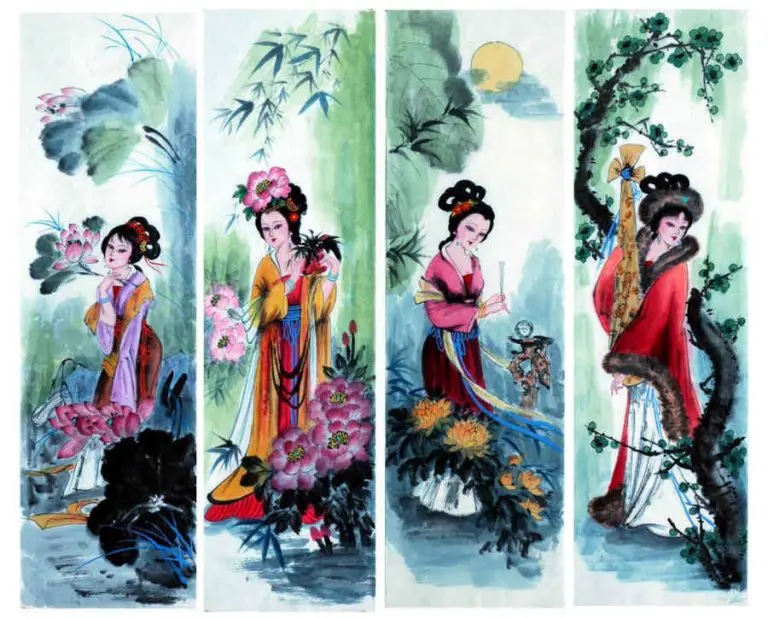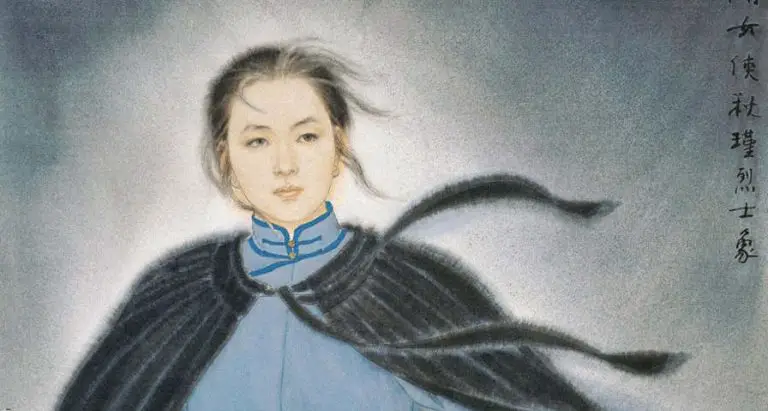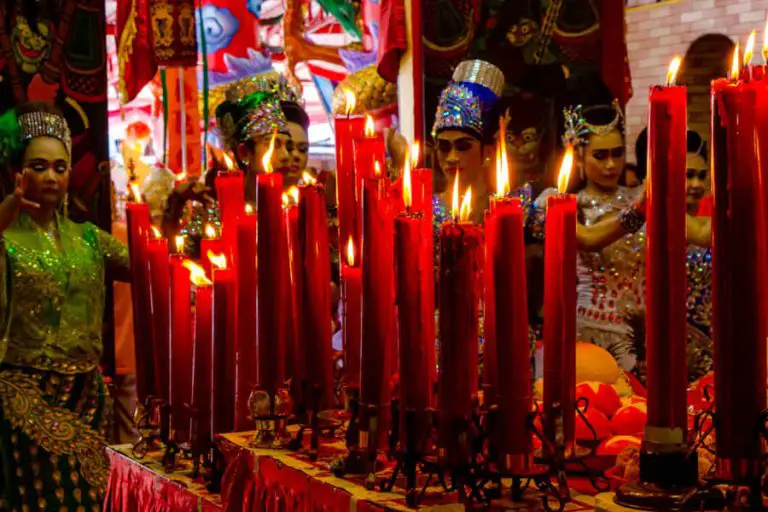Chinese folklore, with its rich tapestry of myths, legends, and ancient tales, continues to enchant and inspire people worldwide. These timeless stories, brimming with fantastical characters and profound themes, have seamlessly woven themselves into the fabric of contemporary culture and media.
From literature and art to film, television, video games, and fashion, the influence of Chinese folklore is evident and enduring.
This article explores how traditional Chinese myths and legends are reimagined and incorporated into modern storytelling and visual arts, highlighting their role in promoting cultural exchange and fostering global appreciation of Chinese heritage.
Literature and Art: The Enduring Influence of Chinese Folklore
Chinese folklore has woven its magic into the fabric of contemporary literature and art, both within China and across the globe. The timeless themes, characters, and motifs from traditional Chinese myths and legends continue to inspire and captivate modern audiences, showcasing the rich cultural heritage of China in new and imaginative ways.
Contemporary Literature: Reimagining Myths
In the realm of literature, Chinese folklore provides a treasure trove of inspiration for contemporary writers. Classic tales such as those from “Journey to the West” or the legends of the Eight Immortals are reimagined in modern narratives, offering fresh perspectives while preserving their mystical essence.
Authors like Amy Tan and Ken Liu have skillfully incorporated elements of Chinese folklore into their works, blending traditional motifs with modern storytelling techniques. For instance, Liu’s “The Grace of Kings”* draws heavily from Chinese history and mythology, creating a unique genre known as silkpunk that resonates with readers worldwide.
Visual Arts: Ancient Motifs in Modern Creations
The visual arts scene, both in China and internationally, also reflects the profound influence of Chinese folklore. Artists draw upon the rich symbolism and aesthetic traditions of Chinese myths to create works that are both contemporary and timeless.
Traditional motifs like dragons, phoenixes, and the legendary figures of Chinese mythology appear frequently in modern paintings, sculptures, and digital art, offering a visual dialogue between the past and the present.
Taiwanese-American artist James Jean, for example, blends elements of Chinese folklore with contemporary techniques in his stunning illustrations, bringing mythical creatures and ancient tales to life in a way that appeals to modern sensibilities.
Similarly, the intricate paper-cutting art, a traditional Chinese craft, has found new expressions in contemporary art installations, where artists explore themes from folklore with innovative approaches and materials.
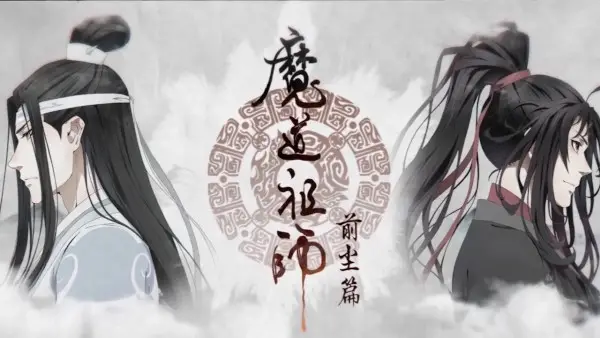
Global Influence: Chinese Folklore in International Art
The influence of Chinese folklore extends beyond China’s borders, enriching global art and literature. International authors and artists often incorporate Chinese myths into their works, introducing these fascinating stories to a broader audience.
For example, the tale of Mulan has inspired numerous retellings and adaptations worldwide, highlighting themes of bravery and identity that resonate universally.
Graphic novels and comics also serve as a medium where Chinese folklore is reinterpreted for global audiences. The graphic novel “The Monkey King”* by Wei Dong Chen adapts the beloved tale of Sun Wu kong, bringing the legendary hero to a new generation of readers through a visually engaging format.
These adaptations not only preserve the essence of the original tales but also make them accessible and relatable to contemporary audiences.
Chinese folklore continues to be a rich source of inspiration for contemporary literature and art. By reimagining traditional themes, characters, and motifs, modern creators keep these ancient stories alive, ensuring their enduring legacy in the ever-evolving cultural landscape.
Related reading: How Chinese Family Values Shape Personal Development – Opens in new tab
Film and Television: The Impact of Chinese Folklore
Chinese folklore has left a significant imprint on the film and television industry, both within China and in Hollywood. The timeless tales and legendary characters from traditional myths and legends provide a rich source of material that continues to captivate audiences worldwide.
Influence in Chinese Cinema and Television
In China, the film and television industry frequently draws upon its vast repository of folklore. The tales of “Journey to the West,” “The Legend of the White Snake,” and “The Monkey King” are recurrent themes in Chinese media, each adaptation bringing a new interpretation while staying true to the original narrative’s essence.
One of the most enduring and beloved stories is “Journey to the West,” which has inspired countless films and TV series. The story of the Monkey King’s adventures, along with his companions, resonates with themes of redemption, perseverance, and the quest for enlightenment.
Each retelling, whether through traditional opera or modern CGI-laden films, explores different facets of this rich narrative, appealing to both young and old.

The 2015 TV series “The Journey of Flower” is another example of folklore’s impact, blending elements of fantasy and romance with traditional mythological themes.
This show, based on a popular novel, incorporates the mystical and moral elements of Chinese mythology, reflecting the ongoing cultural relevance of these ancient stories.
Hollywood and International Adaptations
Hollywood has also embraced Chinese folklore, producing films that introduce these rich narratives to a global audience. Disney’s “Mulan,” based on the legendary story of Hua Mulan, is a prime example.
The animated classic, and its live-action adaptation, highlight themes of bravery, honor, and family, capturing the spirit of the original ballad while making it accessible to a broad audience.
Another significant influence is the tale of “The Monkey King,” which has appeared in various forms in international media. Movies like “The Forbidden Kingdom” blend Chinese mythology with Western storytelling techniques, bringing characters like Sun Wukong to life in a way that appeals to diverse audiences.
Animated series also play a crucial role in popularizing Chinese folklore. DreamWorks’ “Kung Fu Panda” series, while not a direct adaptation, is heavily inspired by Chinese martial arts traditions and mythological themes. The characters and setting draw from Chinese culture, making these stories both entertaining and educational for global viewers.
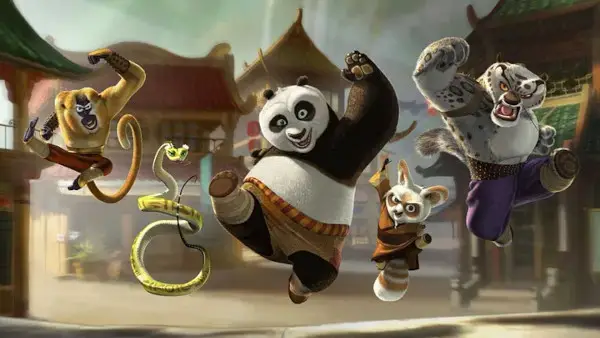
Popular Films and TV Shows Inspired by Chinese Mythology
Several popular films and TV shows explicitly draw inspiration from Chinese mythology and folklore. “The Monkey King” film series, starring Donnie Yen and Aaron Kwok, brings the tale of Sun Wukong to the big screen with stunning visual effects and action sequences.
These films stay true to the adventurous spirit of the original stories while using modern cinematic techniques to enhance their appeal.
TV series like “Ice Fantasy” and “Investiture of the Gods” (2021), blend Chinese mythology with epic fantasy, creating visually stunning narratives that captivate audiences. These shows often feature elaborate costumes, intricate sets, and complex storylines, reflecting the grandeur of Chinese legends.
Video Games and Anime: The Presence of Chinese Folklore
Chinese folklore has carved a significant niche in the world of video games and anime, with numerous titles showcasing characters, settings, and narratives deeply rooted in Chinese mythology.
These ancient tales provide a rich tapestry for game developers and anime creators, who weave traditional elements into modern storytelling, captivating a global audience.
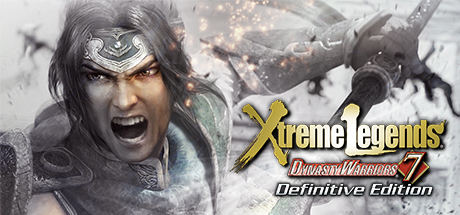
Chinese Folklore in Video Games
Video game developers have long drawn inspiration from Chinese mythology, creating immersive worlds where players can engage with legendary characters and epic tales.
One prominent example is the “Dynasty Warriors” series by Koei Tecmo. Based on the historical novel “Romance of the Three Kingdoms,”* this series incorporates mythological elements, bringing to life legendary figures like Guan Yu and Cao Cao in a dynamic and interactive format.
Another popular game, “Journey to the West” delves into the adventures of Sun Wukong and his companions. Players experience the story firsthand, battling demons and overcoming obstacles in a journey that stays true to the spirit of the original tale. The intricate storytelling and rich cultural references in these games offer both entertainment and a deeper understanding of Chinese folklore.
The “Genshin Impact” phenomenon by miHoYo is another testament to the appeal of Chinese mythology in gaming. While the game features a diverse world inspired by various cultures, the region of Liyue is heavily influenced by Chinese aesthetics and folklore.
From the architecture to the folklore-inspired characters like Zhongli and Ningguang, “Genshin Impact” seamlessly integrates elements of Chinese mythology, making it a beloved title worldwide.
Similarly, the “Gujian” series of action-RPGs immerses players in a fictionalized version of ancient China, blending compelling storytelling with elements of Chinese culture and mythology. The “Legend of Sword and Fairy” franchise has also been praised for its rich integration of Chinese folklore, creating enchanting fantasy worlds that resonate with global audiences.
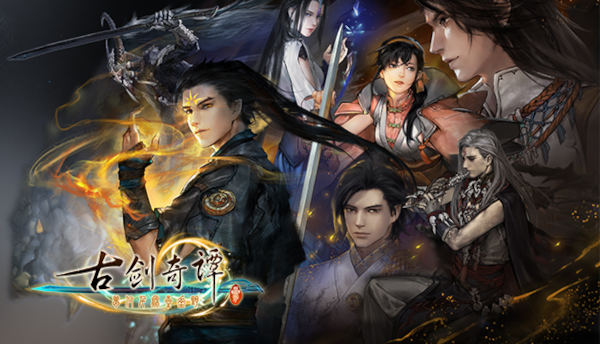
Anime: Bringing Chinese Myths to Life
Anime, with its vibrant visual style and compelling narratives, is another medium where Chinese folklore thrives. Many anime series incorporate themes and characters from Chinese mythology, presenting them in ways that resonate with both Japanese and international audiences.
An example of this integration is the anime adaptation of “Hitori no Shita: The Outcast,” which is based on a Chinese webcomic. The series explores supernatural themes and features martial arts, reflecting the influence of traditional Chinese tales.
The blending of Chinese folklore with anime’s dynamic storytelling style creates a unique viewing experience that appeals to fans globally.
The anime “Mo Dao Zu Shi,” adapted from a Chinese web novel, has also garnered international acclaim. Set in a world of cultivation and spiritual energy, the series draws heavily from Chinese myths and legends.
Its complex characters, intricate plot, and beautiful animation showcase the depth and allure of Chinese folklore, making it a standout example of cross-cultural storytelling.
Perhaps the most well-known example is the “Dragon Ball” franchise, which is directly inspired by the classic “Journey to the West” novel, with the protagonist Son Goku being a clear nod to the legendary Monkey King, Sun Wukong.
The beauty of Chinese folklore in video games and anime lies in its adaptability. Developers and creators can take inspiration from classic tales and characters, reimagining them to fit their specific narratives and settings.
This flexibility allows them to create fresh and exciting experiences while still honoring the essence of the original myths.
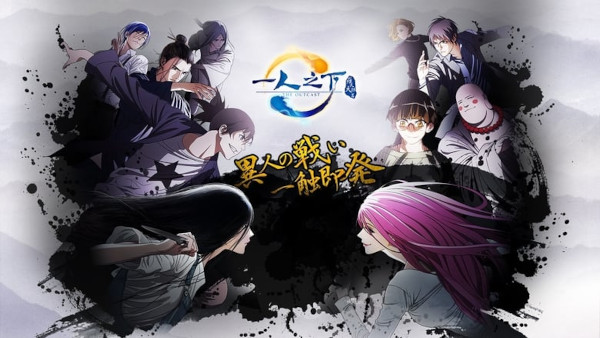
Fashion and Pop Culture: The Influence of Chinese Folklore
Chinese folklore has significantly influenced fashion trends, pop culture icons, and consumer products, infusing modern aesthetics with traditional symbols and motifs.
This blending of ancient mythology with contemporary style reflects a growing global interest in East Asian culture and aesthetics.
Fashion Trends: Mythology on the Runway
Chinese folklore has made its mark on the fashion world, inspiring designers to incorporate traditional elements into their creations. High fashion runways often feature garments adorned with motifs from Chinese mythology, such as dragons, phoenixes, and the intricate patterns of traditional Chinese art.
Designers like Guo Pei have gained international acclaim for their luxurious creations that draw heavily from Chinese heritage. Guo Pei’s dresses often feature elaborate embroidery depicting scenes from Chinese legends, blending historical craftsmanship with modern design.
Her work not only showcases the beauty of Chinese folklore but also brings it to a global stage, highlighting the timeless elegance of these ancient stories.
Another notable example is the Met Gala 2015 theme, “China: Through the Looking Glass,” which celebrated Chinese influence on Western fashion.
Designers created stunning pieces inspired by Chinese folklore and traditional clothing, demonstrating the enduring appeal and versatility of these motifs in contemporary fashion.
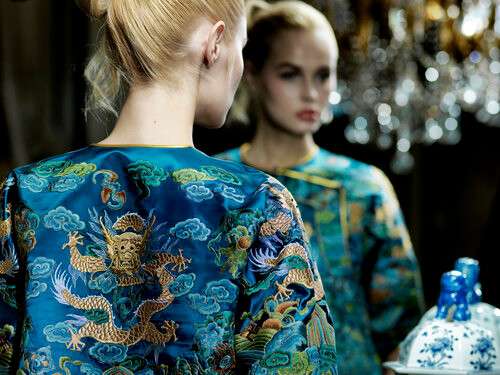
Pop Culture Icons: Mythical Inspirations
Pop culture icons and celebrities have also embraced Chinese folklore, incorporating its themes and symbols into their personal style and public personas.
For example, pop stars like Rihanna and Lady Gaga have worn outfits inspired by Chinese mythology, featuring bold designs that echo traditional Chinese motifs. These appearances not only reflect the influence of Chinese culture in pop culture but also introduce these elements to a wider audience.
In addition, fashion brands often collaborate with Chinese artists and designers to create special collections that celebrate Chinese folklore. These collaborations result in unique pieces that merge modern fashion with ancient myths, appealing to consumers who appreciate both style and cultural heritage.
Related reading: Exploring The Importance Of Family In Chinese Culture – Opens in new tab
Consumer Products: Mythology in Everyday Life
Beyond fashion, Chinese folklore also permeates a wide range of consumer products, from accessories to home décor. Symbols such as the dragon, phoenix, and lotus flower are commonly found in jewelry, clothing, and even tech accessories, reflecting their significance in Chinese culture.
Brands like Gucci and Louis Vuitton have released limited-edition collections featuring Chinese mythical motifs, catering to a growing market for culturally-inspired luxury goods. These products often combine traditional designs with modern functionality, making them both fashionable and meaningful.
Moreover, the influence of Chinese folklore extends to merchandise and collectibles. Popular culture franchises often release products that incorporate elements of Chinese mythology, appealing to fans who value cultural references in their favorite items. For instance, limited-edition sneakers, bags, and accessories featuring designs inspired by Chinese myths are highly sought after by collectors.
East Asian Aesthetics: A Growing Trend
The incorporation of Chinese mythology into fashion and pop culture is part of a broader trend of increasing interest in East Asian aesthetics. This trend is driven by a desire for diversity and a deeper appreciation of different cultural narratives. As people become more connected globally, the exchange of cultural symbols and stories enriches the fashion and pop culture landscapes.
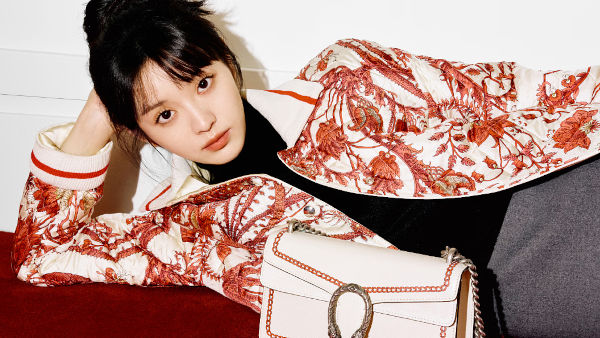
Global Awareness and Appreciation: Promoting Cultural Exchange
Chinese folklore plays a pivotal role in promoting cultural exchange and fostering global awareness and appreciation of Chinese heritage. Through various initiatives and platforms, traditional Chinese myths and legends are preserved, celebrated, and shared with audiences worldwide, enhancing cross-cultural understanding and appreciation.
Cultural Exchange and Awareness
Chinese folklore serves as a bridge between cultures, offering a glimpse into China’s rich history and traditions. By sharing these ancient stories, cultures connect on a deeper level, fostering mutual respect and appreciation. Folklore often contains universal themes such as love, bravery, and moral lessons, which resonate across different cultures, creating a shared human experience.
Festivals and cultural events around the world often feature Chinese folklore, providing a platform for people to engage with these stories. Events like the Chinese New Year celebrations include performances and activities centered around myths and legends, such as the story of Nian, the beast driven away by loud noises and the color red.
These events not only entertain but also educate participants about the cultural significance of these stories.
Initiatives and Platforms: Preserving and Celebrating Chinese Folklore
Several initiatives and platforms are dedicated to preserving and celebrating Chinese folklore, ensuring these stories reach a global audience. Museums and cultural institutions frequently host exhibitions that showcase artifacts and artworks inspired by Chinese mythology.
For instance, the British Museum and the Metropolitan Museum of Art have curated exhibits highlighting Chinese myths, providing context and interpretation to help visitors appreciate their cultural importance.
Online platforms also play a crucial role in disseminating Chinese folklore. Websites, podcasts, and social media channels dedicated to Chinese culture share stories, illustrations, and discussions about traditional myths and legends.
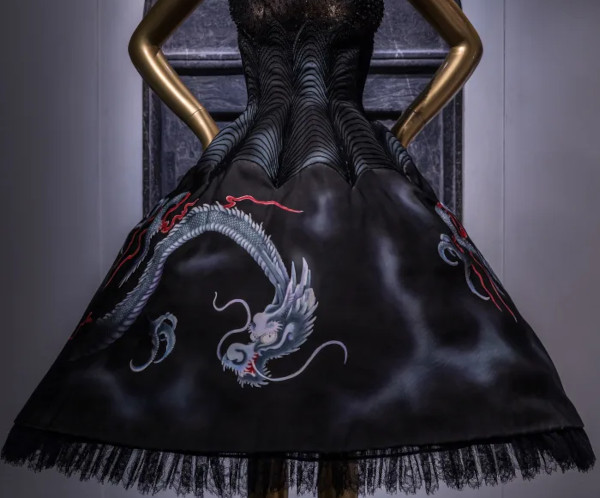
These digital platforms make it easier for people worldwide to access and learn about Chinese folklore, breaking down geographical barriers and expanding cultural reach.
In the literary world, translations of Chinese myths and legends make these stories accessible to non-Chinese readers. Publishers and authors work together to bring these tales to life in different languages, ensuring the stories are not lost in translation.
Collections of Chinese fairy tales, such as “The Classic of Mountains and Seas”* and “Strange Stories from a Chinese Studio,”* are popular among readers interested in world mythology.
Educational Programs and Collaborations
Educational programs and collaborations also contribute significantly to promoting Chinese folklore globally. Schools and universities often include Chinese mythology in their curricula, offering courses and lectures on the subject. These educational initiatives help students gain a deeper understanding of Chinese culture and its historical context.
International collaborations between artists, filmmakers, and writers also help bring Chinese folklore to a wider audience. Joint projects, such as film co-productions and literary anthologies, showcase the richness of Chinese mythology while blending it with other cultural narratives.
These collaborations highlight the universal appeal of these stories and their ability to transcend cultural boundaries.
Related reading: The Importance of “Guanxi” 关系 (Relationships) in Chinese Society – Opens in new tab
Promoting Cross-Cultural Understanding
These initiatives and platforms not only celebrate Chinese folklore but also serve as a means of promoting cross-cultural understanding and appreciation. By sharing these timeless tales with audiences around the world, they help to break down barriers, challenge stereotypes, and foster a greater sense of global community.
As the world continues to grapple with complex social and political challenges, the role of Chinese folklore in promoting cultural exchange and understanding has never been more important. By preserving and sharing these rich traditions, we can build bridges between cultures, celebrate our shared humanity, and create a more just and equitable world for all.
* Affiliate links
An Introduction to Chinese History & Culture (Aff.link)
Dive into China’s rich past and intriguing present! From ancient dynasties to modern powerhouses, uncover Chinese culture facts, pivotal moments, and the captivating tales that have shaped this vast nation.
Stay in Touch
 Join our newsletter by using the forms on this website or click here!
Join our newsletter by using the forms on this website or click here! Follow us on Google News
Follow us on Google News Follow us on Facebook
Follow us on Facebook
Feature Image from Depositphotos



